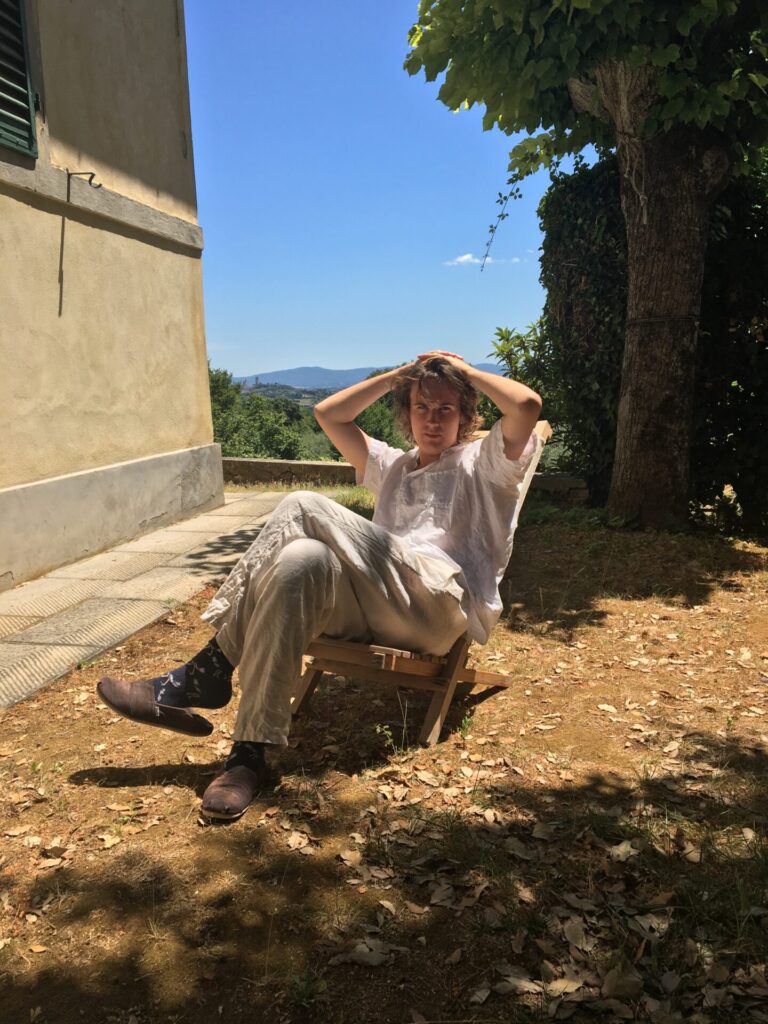How did you first become interested in Art History?
I grew up in a very artistic family, my Italian grandmother was an artist who went to the Accademia di Brera for scenography. Both of my aunts on my mother’s side are also artists. I spend my summers in the art-drenched hills of Tuscany, which certainly set me up to have a deep appreciation and love for art. That said, I don’t think there was ever one definitive “moment” where I discovered art history as a subject. Rather it was a constant crescendo: the more art I encountered, both in school and in Italy, the more amazed I became, and the more convinced I was that I needed to study art history.

Do you have a specialization or specific interest?
My tastes are fairly eclectic— I love early Christian art for its use (and sometimes subversion) of the classical canon in service of a new, radically different religion, and I admire Futurist art for its explosive vitality. That said, Baroque art has a special place in my heart. I could stare at works by Bernini, Borromini, Pietro da Cortona, and Caravaggio for weeks on end!
What are some lesser-known artistic sights that are unmissable, in your opinion?
If you are ever in Rome, I highly suggest you go to the courtyard of Palazzo Spada to see Francesco Borromini’s forced perspective gallery. It’s a bit hard to explain in words, but basically, it’s an 8 metre tunnel made to look three times as long through forced perspective! I would also strongly recommend going to the Church of the Gesù to see The Triumph in the Name of Jesus by Baciccio: the painting explodes out of its frame out onto the coffered ceiling, parts of which are lacquered to make fake shadows for the painted figures.
If you’re looking to see something a bit more modern, I would suggest going to Genoa to see the apartment designed by Franco Albini in Palazzo Rosso. It’s a superb example of postwar Italian architecture that puts Albini’s modernist style into dialogue with an elegant renaissance palazzo. Hardly any foreigners visit it, despite its UNESCO World Heritage status.
What do you hope to gain from this experience at CIMA? What are you most looking forward to?
I’m really looking forward to getting to know how a gallery operates on a daily basis, as well as getting to know all of the people who work here! Due to the pandemic, I haven’t really gotten the chance to meet people who work in the art world, nor have I gotten the chance to discover the types of jobs available to me in the future. Additionally, I can’t wait to learn more about Mario Schifano, as postwar European art is a topic that I haven’t yet studied at length.
If you could purchase one work of art, what would it be and why?
I would probably purchase Caravaggio’s Madonna dei Palafrenieri. It’s a beautiful, yet menacing painting: I always read baby Jesus crushing the snake with his foot as a veiled threat against anyone who dares to dissent or question authority. The juxtaposition between the beautiful individual figures and the message of the painting as a whole is incredibly striking and powerful.
What do you like to do in your free time?
I like to read, draw, paint with oils, and play with my two cats. I’m also learning French!
